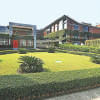Green garment factory owners left frustrated

Green garment factory owners, who have spent billions of dollars for setting up the units, are left frustrated as the international retailers are not rewarding them with higher prices for the initiative.
The factories cost 20 to 30 percent more to construct than the regular ones for their special design units.
“The buyers do not pay even a single cent more for sourcing from a green garment factory,” said KM Rezaul Hasanat, chairman and chief executive officer of Viyellatex Group, a leading garment exporter.
Bangladesh has the highest number of LEED (Leadership in Energy and Environmental Design) green garment factories certified by the US Green Building Council (USGBC).
Currently, 67 green garment factories are in operation and another 300 are in the process of getting the certification. Of the top 10 green garment factories in the world, the first seven are also located in Bangladesh.
Had Viyellatex Group not constructed its two green garment factories in Gazipur, it could have employed 30 percent more workers, Hasanat said.
“I regret making the green factories,” he said, adding that the buyers pay much lower prices to Bangladeshi garment makers than the Chinese ones.
Kutubuddin Ahmed, chairman of Envoy Group, which has constructed the world's first platinum-rated green denim factory, echoed the same.
“The buyers do not pay extra prices to us, but the branding gives us a mileage in selling the goods -- they give priority to green factories,” said Ahmed, whose main intent for setting up green factories was to lower the consumption of water and power.
Md Fazlul Hoque, managing director of Narayanganj-based Plummy Fashions, the platinum-rated knitwear factory, and Siddiqur Rahman, president of the Bangladesh Garment Manufacturers and Exporters Association, echoed the same.
“There is no special privilege for the green garment factories; only the buyers' priority,” Rahman said, adding that the buyers do not even want to quote a higher price for factory remediation as recommended by the Accord and Alliance experts.
Although the buyers do not pay additional money for the virtue of sourcing from a green factory, there is a room for bargaining for a little more price per unit due to the green factories, Hoque said.
For instance, if the price of a T-shirt from a normal-compliant factory is $3, it is possible for green factories to get 10 cents more.
“The buyers though do not pay high prices to green factories out of their own volition,” Haque added.
Regardless, the prices of Bangladeshi-made garment items has declined 40 percent over the last 15 years, Rahman said.

 For all latest news, follow The Daily Star's Google News channel.
For all latest news, follow The Daily Star's Google News channel. 








Comments